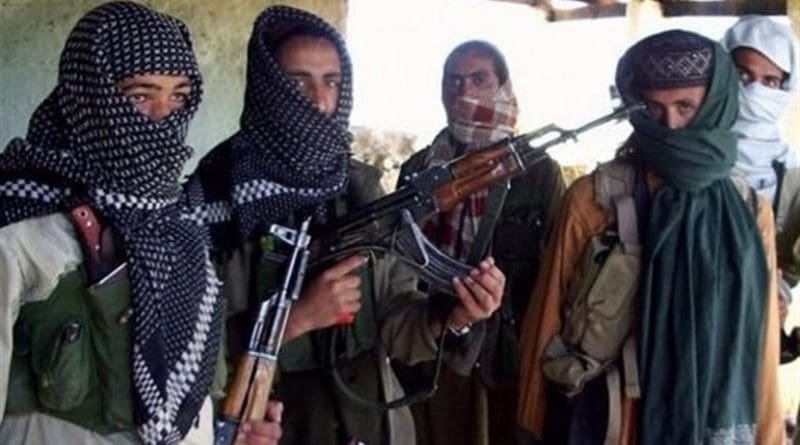The Situation In Afghanistan Post-2014 – OpEd
It has been two decades; Afghanistan is suffering from deep political, economic, and security crises. Since, the American invasion in 2001, there has been a tremendous upheaval on the political leadership of Afghanistan because of the power struggle among the Afghan political leaders. So far, the invasion has cost 100 billion of dollars spent by America along with the loss of more than tens of thousands of lives including Afghan army force and civilians, still the Taliban are not only undefeated but they seem much stronger than before.
The security situation of Afghanistan has been very tragic in the recent year because the civilian casualties are at peak since 2002.Taliban’s are in much stronger position than before and are controlling around fifty-nine districts, which is approximately 14.5 percent area of Afghanistan while afghan government only control 56.3 percent and the remaining 29 percent is contested.
Washington and Kabul signed the bilateral security agreement (BSA) in 2014under which ten thousand U.S troops will remain in Afghanistan for training and advisory purposes. Kabul also signed similar agreement with North Atlantic treaty organization (NATO) on September 30 under which Afghanistan will allow 4,000-5,000 NATO troops to remain in Afghanistan that makes up the total number of foreign forces up to 15,000. Under these agreements the U.S and NATO forces will improve the ability of Afghan national army to counter the internal and external threats to the sovereignty of Afghanistan.
In the recent years, Afghanistan has been coping with serious security challenges because the resurgent groups have become much stronger than before in terms of territorial control.The Taliban began regrouping and attacking and capturing major districts of Afghanistan by ambushing ANSF and civilians. Because of this kind of surprise lethal attacks, the civilian casualties have escalated alongside the destruction property facing displacement from their own villages. Likewise, since BSA Taliban’s have increased the attacks and remained successful in periodic large-scale attacks across Afghanistan especially the capital Kabul was their primary target. Between 2016 and May 2017, the number of large-scale attacks on ANSF, NATO, U.S forces and civilians were carried out by the Taliban across different parts of Afghanistan, the major high scale attacks were carried out in Kabul.
According to a US Defense Ministry report, 18 major attacks alone were carried out in Kabul resulting in huge civilian casualties, including the attack on the American university of Afghanistan and the ministry of defense. Kabul diplomatic quarter was targeted by a truck bomb on 21 April 2017, in this attack approximately 90 people lost their lives and more than 400 were injured.
According to National Directorate of Security, these large-scale attacks on Capital were planned and carried out by Haqqani Network.
On the contrary, the same pattern of major attack was carried out by the Taliban on ANSF, when a suicide bomber dressed as a local police officer, detonated a bomb inside the Balkh military base near to Mazar e Sharif that resulted in 144 immediate deaths, both ANSF and Civilians were among casualties. The Taliban’s operation in spring 2017, the so-called Spring offensive, brought the unexpectable level of violence to Afghanistan, as noted in reports approximately 6252 security incidents befell between the March and May of 2017. According to reports, the level of violence has increased by 2 percent as compared to 2016. Moreover, the strategic targets in the Taliban’s focus are some major areas and districts of the Afghanistan, such as Badakhshan, Baghlan, Farah, Faryab, Helmand, Kunar, and Laghman.
And, 2018 has seen a further increase in violence across Afghanistan as the Taliban has remained successful in capturing more territories in Afghanistan by tactically targeting ANSF bases across the country. Kabul was bombed in June 2018 that killed more than 100 people and injured more than 300 people. The first six month of 2018 has seen a lot of civilian casualties according to UN report, that recorded 692civilian deaths and 3,430 injuries. Now, the Taliban controls major territories in nearly every province of Afghanistan including the capital of Farah province and most of the Ghazni province, which were captured in May and August 2018, simultaneously.
As we see the rampant attacks of Taliban on ANSF and civilians for territorial gain that is making the security situation of Afghanistan much complicated for the ANSF and USA. What US Defense Secretary James Mattis stated in his recent testimony in the united state senate in June 2017 that, “US and its coalition forces were not winning in Afghanistan”—which means the security situation in Afghanistan is going to become much tense in the years to come.
*Uzair Shagiwal is from Nangarhar, Afghanistan and a student of International Relations at International Islamic University, with a keen interest in writing on history and geopolitics.

